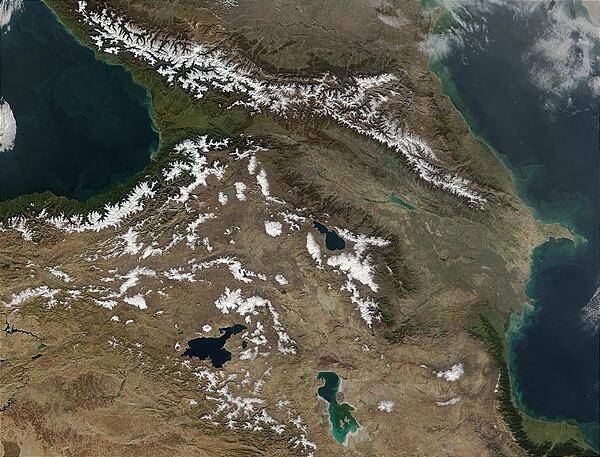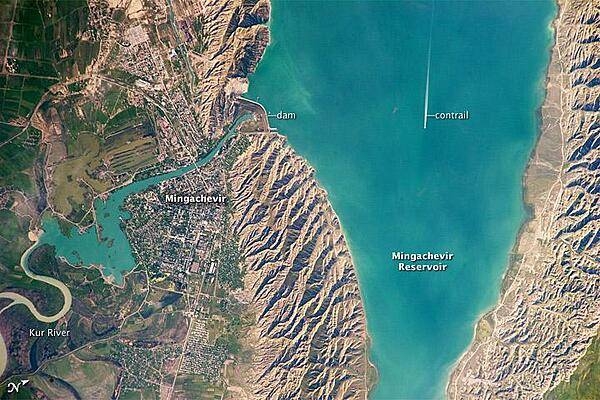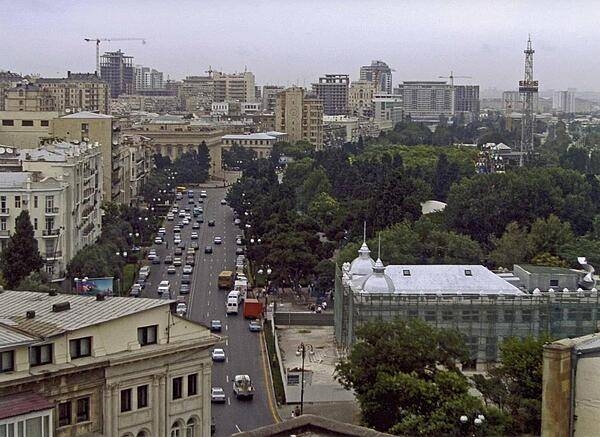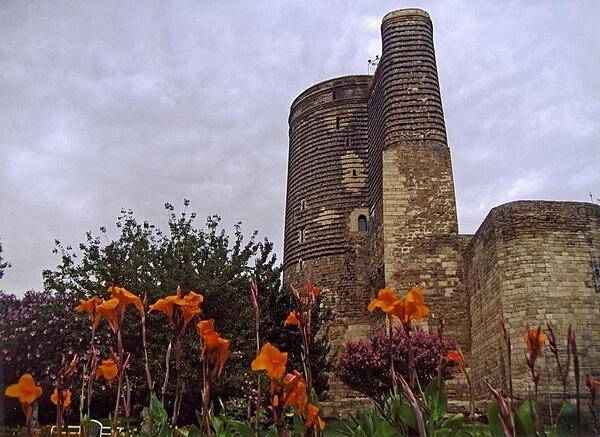Azerbaijan
Photos
6 Photos
Filter Categories
All
Filters
Measured by surface area, the Caspian Sea is the world's largest inland water body. It covers roughly 371,000 sq km (143,200 sq mi) and borders five countries. To the ancient Greeks and Persians, the lake's immense size suggested it was an ocean, hence its name. A large expanse of clear sky permitted this natural-color satellite image of the entire water body. The color of the Caspian Sea darkens from north to south, thanks to changes in depth and perhaps sediment and other runoff. The northern part of the lake is just 5 to 6 m (16 to 20 ft) deep. The southern end, however, plunges more than 1,000 m (3,300 ft). Just as the lake reaches a greater depth in the south, the nearby land reaches a greater height. The mountains of northern Iran line the southern end of the giant lake, and emerald green vegetation clings to those mountain slopes. In marked contrast to the mountains, sand seas line the southeastern and northern perimeters of the lake, and marshes occur along the lake shores in Azerbaijan to the west. Multiple rivers empty into the Caspian Sea, the Volga being the largest. Lacking an outlet, the Caspian Sea loses water only by evaporation, leading to the accumulation of salt. Although a lake, the Caspian is not a freshwater lake; the water delivered by the Volga River minimizes the lake's salt content at the northern end, but the Caspian grows more saline to the south. Kara-Bogaz-Gol is a saline inlet along the lake's eastern perimeter. Image courtesy of NASA.

Often regarded as the southeastern border of Europe, the Caucasus Mts stretch from the Black Sea (left) to the Caspian Sea (right). The mountain range spans 1,125 km (700 mi), forming part of the southern Russian border, and crossing Georgia, Armenia, and Azerbaijan from left to right respectively. With a snowline of approximately 3,350 m (11,000 ft) and many peaks over 4,500 m (14,760 ft), much of the snow seen in this image is present year round. Also visible in this photo are apparent phytoplankton blooms in the Caspian Sea, marked by blue-green swirls. Image credit: NASA.

This astronaut photograph highlights the southern Mingachevir Reservoir in north-central Azerbaijan. The Mingachevir Reservoir occupies part of the Kura Basin, a topographic depression located between the Greater Caucasus Mountains to the northeast and the Lesser Caucasus Mountains to the southwest. The afternoon sun highlights distinctive parallel patterns in the hills that are the result of water and wind erosion of different rock layers exposed at the surface. The nearby city of Mingachevir (left) is split by the Kur River after it passes through the dam and hydroelectric power station complex at image top center. The current city was built in support of the hydroelectric power station constructed as part of the then-Soviet Union's energy infrastructure for the region. Today, Mingachevir is the fourth-largest city in Azerbaijan (by population), and it has become a cultural and economic center of the country. The width of the reservoir illustrated here is approximately 8 km (5 mi); a jet flying over the reservoir left a contrail midway between the shorelines. Photo courtesy of NASA.

Baku is Azerbaijan's major city, and the oil capital of the Caspian region. This photo shows details of the city, including the extensive port facilities, and part of the large web of offshore oil platforms in the Caspian Sea. The oil platforms off Baku were built in the 1950s and 1960s, and were the first offshore oil-drilling efforts in the world. Today, multinational oil exploration, sea-level rise (the Caspian Sea has risen more than 2 m in the past 20 years), offshore platform maintenance, and environmental degradation are all hot topics in Baku. Image courtesy of NASA.

A downtown view of the capital of Baku.

The Maiden Tower, built sometime between A.D. 800 and 1200, is the most recognized structure in the Old City of Baku.
